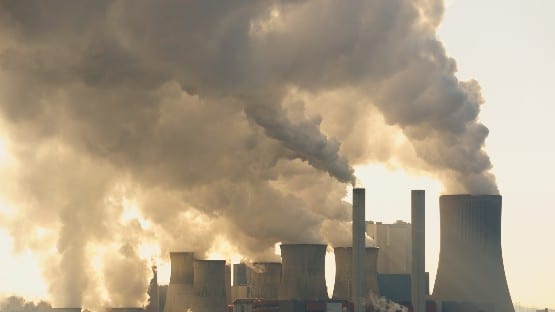
Dear EarthTalk: What is so-called “embodied carbon” and what percent of our greenhouse gas emissions does it make up? And more important, how can we reduce it? – Mike O., Durham, NC
As the process of reducing carbon dioxide (CO2) emissions continues to grow in importance, the building operations industry has been working hard on limiting theirs. The problem is that this industry typically targets operational carbon rather than embodied carbon. Operational carbon is the sum of the carbon produced over the lifetime of a building and includes things like lighting, heating, ventilation and general power usage throughout the building. On the other hand, embodied carbon is all of the emissions that are created during the process of constructing a building. Embodied carbon is associated with the harvesting, manufacturing, transportation, installation, maintenance and disposal of building materials.
Buildings in general tend to account for at least 39 percent of annual global carbon emissions. At least a quarter of these emissions are the result of embodied carbon. Cement alone is responsible for around eight percent of the world’s CO2 emissions. The production of iron and steel emits roughly the same number of emissions. These carbon-intensive materials are large contributors of embodied carbon.
There are some measures that have already been taken in efforts to reduce embodied carbon. The Inflation Reduction Act, which was passed by Congress in 2022, includes six sections that address the embodied carbon of construction materials. For example, section 60112 gave $250 million to the EPA to develop a program to help support enhanced standardization, measurement, reporting and verification of embodied carbon of construction materials and products. Overall, these sections of the Inflation Reduction Act gave money to various government organizations to help transition to lower carbon materials.
To reduce embodied carbon, the building industry will have to make operational changes. One key way to do that is to design buildings in a way that minimizes the number of materials needed. Companies can also replace carbon-intensive materials like concrete and steel with greener options like sustainably grown wood. Repurposing existing buildings instead of building new ones can also reduce embodied carbon.
Another way to limit embodied carbon is to use greener construction equipment. The traditional diesel-powered equipment so commonly used in construction accounts for roughly three percent of embodied carbon in new construction projects. There are some equipment manufacturers that are developing zero-emission construction equipment. Liebherr, the German-Swiss equipment manufacturer, has developed an electric crane that releases no emissions and still performs on par with the traditional diesel equipment.
Limiting operational carbon is important, but it’s also important to remember all of the carbon that comes from the processes prior to buildings being operational. The processes behind the scenes still emit CO2. Limiting embodied carbon needs to be prioritized on par with the emissions that come from typical building operations.
CONTACTS: Reducing Embodied Carbon of Construction Materials through the Inflation Reduction Act, www.epa.gov/greenerproducts/reducing-embodied-carbon-construction-materials-through-inflation-reduction-act; Reducing embodied carbon in new construction, www.mckinsey.com/capabilities/operations/our-insights/global-infrastructure-initiative/voices/reducing-embodied-carbon-in-new-construction.
EarthTalk® is produced by Roddy Scheer & Doug Moss for the 501(c)3 nonprofit EarthTalk. See more at emagazine.com. To donate, visit earthtalk.org. Send questions to: [email protected].









